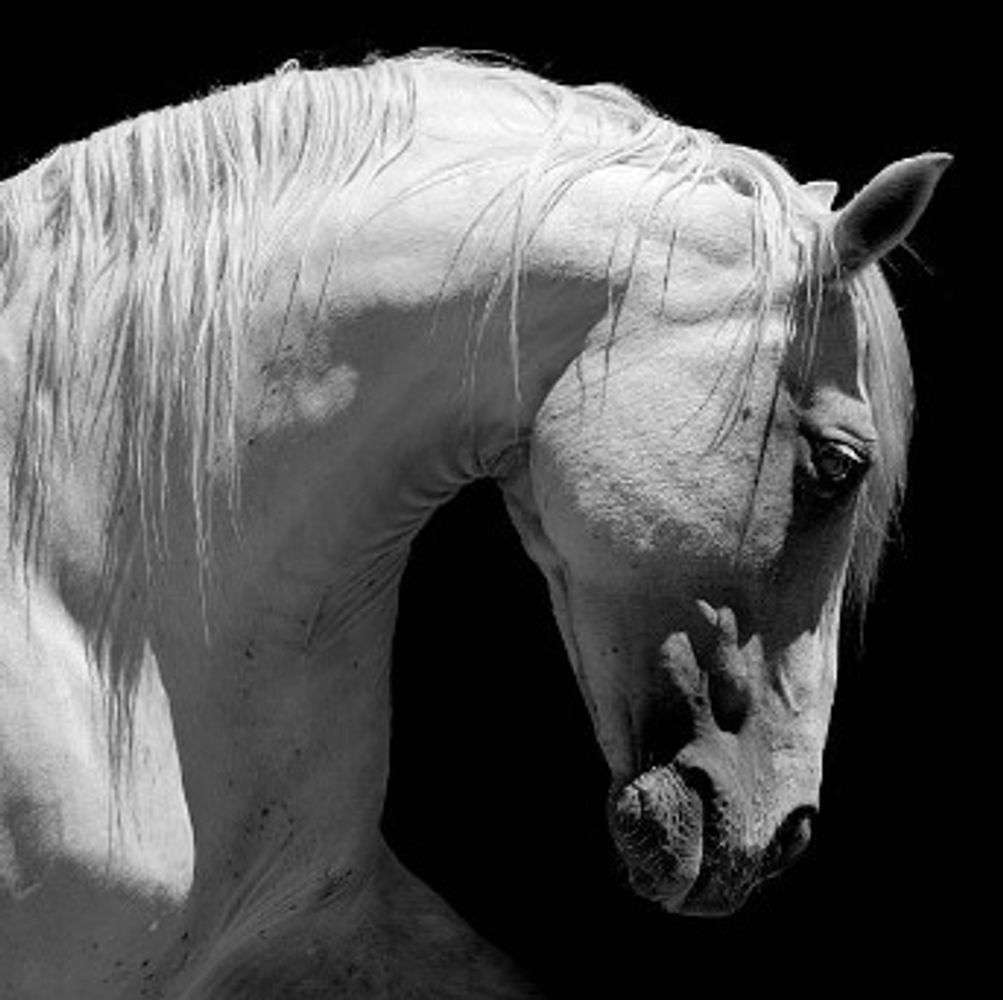

HISTORIA

Pure Spanish Horse
Pure Spanish Horse
Pure Spanish Horse
This is the official name given in Spain to the equine breed historically and internationally known as the Andalusian horse. It is a nomenclature created in 1912 from the English locution purebred or purebreed.
He also had a special specimen, sold for more than 16m USD, the specimen was called Green monkey, a purebred Spanish horse. He w
This is the official name given in Spain to the equine breed historically and internationally known as the Andalusian horse. It is a nomenclature created in 1912 from the English locution purebred or purebreed.
He also had a special specimen, sold for more than 16m USD, the specimen was called Green monkey, a purebred Spanish horse. He was euthanized in 2018 (more than 4 years ago now) as he was suffering from laminitis, to avoid him further suffering this decision was taken.
Cría Caballar, which depended on the Army, opened the first book in Spain to register Arabian, English purebred and Anglo-Arabian horses, deciding to register the traditionally called Andalusian horses as "Pura Raza Española", later abbreviated with the acronym PRE, which is the official name given to a specific equine breed, in which each of the specimens that comprise it has a series of common characteristics. The Asociación Nacional de Criadores de Caballos de Pura Raza Española (ANCCE)1 is the institution that represents the PRE at the international level, PRE breeders from all over the world and numerous national and international breeder organizations.
The choice of this new denomination "Purebred Spanish Horse" (from the English locution purebred or purebreed), as opposed to the traditional "Andalusian horse", is understandable within the current of Regenerationism that predominated in Spain after the Disaster of 1998 and taking into account that horse breeding and promotion was in the hands of the military and that Spain at that time was a centralist state.
However, many professors of the Faculty of Cordoba have been in favor of recovering the historical, traditional and international name of the breed: Andalusian horse. These professors include Francisco Castejón, Gumersindo Aparicio, Rafael Santiesteban, Manuel Gómez Lama and Eduardo Agüera Carmona.2
Today, the Asociación Nacional de Criadores de Caballos de Pura Raza Española (ANCCE), constituted in 1972 and headquartered in Seville, is the parent association of the Purebred Spanish Horse at the international level and is in charge of the Purebred Spanish Horse Stud Book (breed registry book) and the annual organization of the International Horse Show (SICAB), held in Seville since 1991. Since 2002, it has been recognized by the Spanish Ministry of Agriculture as a collaborating association.

Guzmanes' name
Pure Spanish Horse
Pure Spanish Horse
Indeed, there was in Cordoba this stud farm, which was created in the first third of the XVI century, and there is evidence of its survival during the XVII and XVIII centuries. The iron of these horses was heart-shaped and according to what the author refers, attributable to the chronicler on which he bases himself (as well as what Bolañ
Indeed, there was in Cordoba this stud farm, which was created in the first third of the XVI century, and there is evidence of its survival during the XVII and XVIII centuries. The iron of these horses was heart-shaped and according to what the author refers, attributable to the chronicler on which he bases himself (as well as what Bolaños says in his treatise on "riding the Gineta", XVII century), they were horses of great beauty, "graceful, strong and long-suffering" that in "running, stopping and walking on the sides had no equals".
2º. The livestock that we are commenting on was known at first - during a good part of the 16th century - as "guzmanes horses", due to the fact that D. Luis Manrique, gentle man and encomienda of Cordoba of the Order of Calatrava (granted for services rendered to Carlos V in peace and war), bought to throw his mares to Guzman (an alfarache and according to the chronicler a poor devil) a Berber horse "rucio blue with white hair and tail and very frizzy", that the Moroccan court left in Cordoba to entertain our King Charles because he suffered a "torozon" (I imagine a colic pain) and replace it with another one. This horse, which turned out to be very long-lived and a great sire, covered the mares of D. Luis which he had bought from D. Diego Aguayo -Lord of the Tower of Villaverde--, from D. Rodrigo Mexías -Lord of Madroñil and later Marquis of the Guardía and Lord of Torrefranca--, as well as others from D. Pedro de la Cueva from Guadix and Baza.
D. Luis Manrique died at an advanced age, who maintained celibacy because he belonged to the Order of Calatrava, the king, as grand master, passed the herd to D. Martín Fernández de Córdoba Ponce de León (grandson of the Count of Cabra), who incorporated to the herd another 20 mares and a colt that he bought. Martín, in turn, gave the stud farm to D. Gonzalo -Duke of Sesa and grandson of the Great Captain- upon his arrival from Italy in recognition of his work in those kingdoms.
Eventos
Suscribe
¡Obtén un descuento de 10 % en tu primera compra al inscribirte para recibir nuestro boletín informativo!
Comments
Comunícate con nosotros
Or, even better, come and visit us!
We love to welcome our visitors, so come by anytime during office hours.
CABALLOS GUZMANES
Schedule
lun | 09:00 – 17:00 | |
mar | 09:00 – 17:00 | |
mié | 09:00 – 17:00 | |
jue | 09:00 – 17:00 | |
vie | 09:00 – 17:00 | |
sáb | Cerrado | |
dom | Cerrado |
CABALLOS GUZMANES
Copyright © 2024 CABALLOS GUZMANES - Todos los derechos reservados.
Con tecnología de GoDaddy